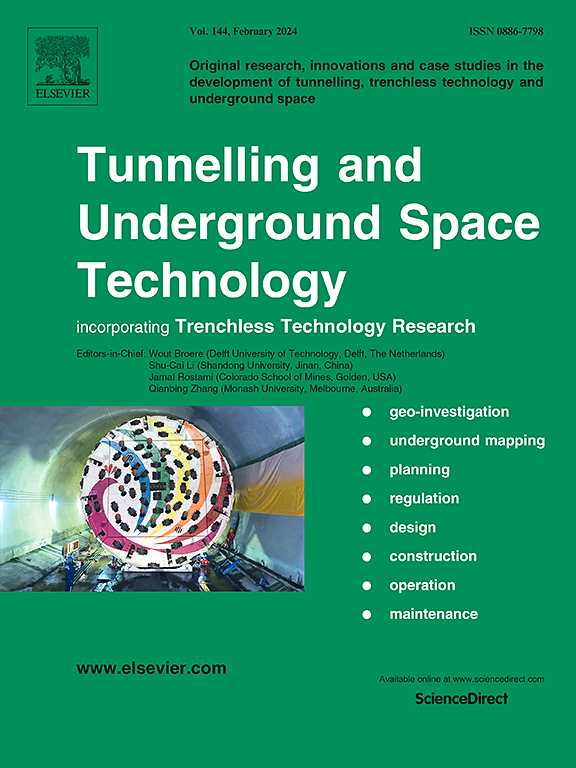A modified mechanical modeling of pipe-soil lateral/axial interactions incorporating pipe trajectory and contact surface characteristics
IF 6.7
1区 工程技术
Q1 CONSTRUCTION & BUILDING TECHNOLOGY
引用次数: 0
Abstract
Accurately predicting pipeline mechanical behavior under ground movement relies on the precise determination of the Soil Resistance-Pipe Displacement (SR-PD) curve. Standard formulas, however, face significant challenges, including the omission of softening behavior after peak resistance, underestimation of ultimate resistance, and neglect of the non-uniform resistance distribution across the pipe cross-section. To overcome these challenges, this paper incorporates the Modified Mohr-Coulomb model and direct shear test data to characterize the behavior of sandy soil at the pipe-soil interface. A logarithmic spiral curve is employed to define the pipe’s trajectory in sandy soil, enabling an analysis of the stress state of the “pipe-wedge” structure during the elastic, hardening, and softening stages of sandy soil deformation. Three models are developed: MPSIM-L, which analyzes lateral resistances along the trajectory; MPSIM-A, which accounts for contributions of soil pressure, sand dilatancy, and cohesion to axial resistances; and MPSIM-LRD, which applies the finite difference method to calculate soil pressures at various locations within the pipe cross-section. The findings show that MPSIM-A and MPSIM-L reduce errors in predicting ultimate resistance by approximately 50% and 38.5%, respectively. Additionally, the resistance distribution predicted by MPSIM-LRD closely aligns with experimental data, demonstrating the accuracy and reliability of the modified models.
求助全文
约1分钟内获得全文
求助全文
来源期刊

Tunnelling and Underground Space Technology
工程技术-工程:土木
CiteScore
11.90
自引率
18.80%
发文量
454
审稿时长
10.8 months
期刊介绍:
Tunnelling and Underground Space Technology is an international journal which publishes authoritative articles encompassing the development of innovative uses of underground space and the results of high quality research into improved, more cost-effective techniques for the planning, geo-investigation, design, construction, operation and maintenance of underground and earth-sheltered structures. The journal provides an effective vehicle for the improved worldwide exchange of information on developments in underground technology - and the experience gained from its use - and is strongly committed to publishing papers on the interdisciplinary aspects of creating, planning, and regulating underground space.
 求助内容:
求助内容: 应助结果提醒方式:
应助结果提醒方式:


